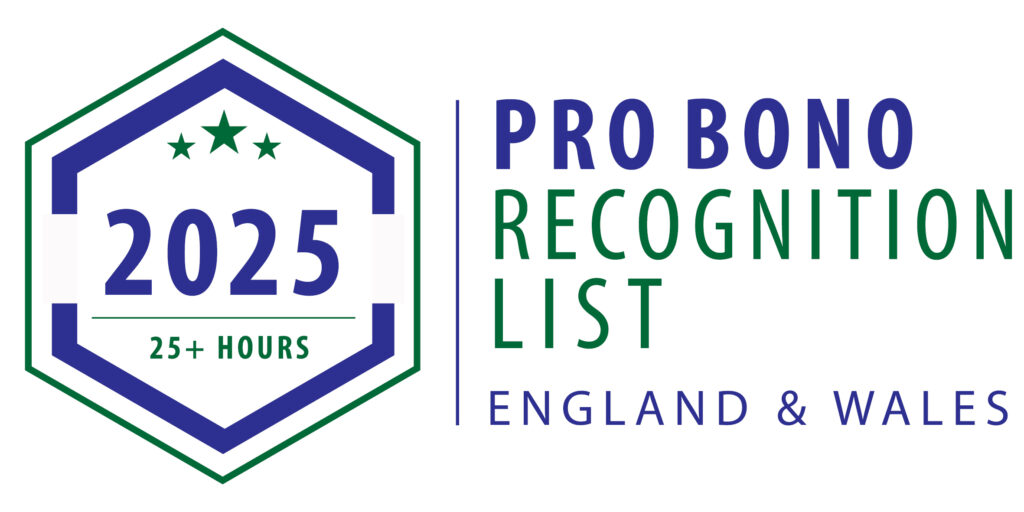This article is the fourth in a series of articles about per- and polyfluoroalkyl substances (PFAS). You can find our third article here.
In this article, Stephen Sykes (a co-founder of London’s environmental insurance market) and Fern Dempsey, with environmental insurance expert Matthew Hussey of AJ Gallagher, explore the insurability of PFAS liabilities.
Per- and polyfluoroalkyl substances (‘PFAS’)— a group of thousands of human-made chemicals —are presenting significant challenges for landowners and their insurers alike. Their widespread use and persistence in the environment have created liabilities that range from cleanup costs to bodily injury claims. In an uncertain market, insurers and reinsurers are grappling with these rapidly crystallising risks.
The Complexity of PFAS Liabilities
For insurers and reinsurers, PFAS has been likened to asbestos, prompting concerns about potentially catastrophic losses. It has been estimated that to clean up the existing legacy of PFAS contamination in the UK alone will cost a conservatively estimated £9bn over the next 20 years.
Key questions for insurers are: where does liability lie – landowner or occupier, PFAS manufacturer, professional advisor? – and hence, which insurance policies may result in claims. Ultimately, an insurers’ or reinsurers’ PFAS exposure across their book of business (e.g. property / casualty, environmental and professional indemnity insurance) is difficult to quantify because of uncertainties around PFAS science and remediation standards and the likelihood of claims arising with claimants needing to prove that their losses were caused by the defendant’s acts or omissions.
PFAS chemicals can lead to liabilities (‘PFAS-related liabilities’). across various areas, including:
- Remediation liabilities: cleaning up ground and surface waters, soils and even buildings to an appropriate standard.
- Regulatory liabilities: the Environment Agency (EA) is serving notices under s61 of the Environmental Protection Act 1990, pressuring large landowners (e.g. owners of airfields where PFAS may be present due to the use of firefighting foam), to address risks and implement solutions.
- Civil liabilities: claims stemming from negligence and private nuisance, with potential losses including diminution in property value, bodily injury, legal defence costs, and remediation expenses.
PFAS Insurance Claims
In the US, insurers are already facing significant exposure to PFAS-related claims. PFAS is considered a fertile source of legal action and large recoveries, and insurers are preparing for substantial losses.
Regulatory activity has led to numerous insurance claims from policyholders seeking defence and indemnity for PFAS-related liabilities. The US Environmental Protection Agency (EPA) has, for example, set regulatory limits on six types of PFAS in drinking water and designated two types as hazardous substances under the main federal clean-up statute, the Comprehensive Environmental Response, Compensation, and Liability Act of 1980. This is triggering claims.
In the UK, while the volume of PFAS-related insurance claims is not as high as in the US, there is growing concern, and there is anecdotal information that claims are already being made for PFAS-related liabilities as UK expert bodies such as CL:AIRE set screening levels for a number of PFAS substances.
Matthew Hussey:
PFAS insurance claims are being seen in the UK on both general liability policies and specific environmental policies. Claims are being seen on sites that currently manufacture and use PFAS chemicals and sites that have a history of PFAS use. There are several claims on environmental policies that relate to historic use of PFAS, such as firefighting foams on airfield training grounds and ex landfill sites. The claims relate to the pollution of groundwater and the surrounding water aquifer and/or surface waters.
The Role of Insurers and Reinsurers
While insurers might initially cover PFAS-related claims, they often transfer these liabilities to their reinsurers. However, reinsurers are increasingly reducing the scope of coverage for PFAS-related risks, leaving insurers exposed and clients struggling to find comprehensive policies. Indeed, Munich Re identify PFAS as a key risk and, with 97% of Americans (and, presumably, Europeans) having PFAS in their blood, has acknowledged that the “potential for liability is massive”.
Matthew Hussey:
Insurance companies have begun to utilise PFAS-specific exclusions across many insurance classes, however, the coverage implications for PFAS-related liabilities vary depending on the specific facts and language of the policies.
PFAS exclusions in general liability policies are rapidly becoming standard. These exclusions specify that the insurance does not, for example, cover any bodily injury and property damage related to PFAS exposure, or the design, manufacturing, sale, or disposal of PFAS-related products.
Professional Indemnity (PI) insurers do not appear to be applying specific PFAS exclusions yet but a PI policy usually only affords limited pollution cover, so only in circumstances where the PFAS pollution was sudden, unintended, unexpected, and resulted from negligence in performance of professional activities and duties by the environmental consultant/contractor, would their PI policy potentially respond to the claim, however costs related to remedying environmental damage are usually not covered. Some PI policies have a complete pollution exclusion and therefore, no cover is provided for PFAS related claims.
Existing Policies
Policyholders are advised to assess their exposure and evaluate their insurance coverage for PFAS-related liabilities.
If you have existing environmental insurance coverage, whether for an individual site or across your site, facility or business, your policy is unlikely to contain PFAS exclusions as these have only been introduced over the past 12 months or so. Many environmental insurance policies are for 10 years, and if the policy period has not yet expired, you may have coverage for PFAS-related claims. It is also worth noting that some PFAS claims are predicated on alleged progressive exposure to PFAS or pollution that occurs over multiple years, which also helps insureds to make claims on existing long-term policies.
Challenge of Securing New Policies
If you are not currently insured for PFAS-related liabilities and are asking your broker to obtain cover for you, this policy will be difficult, or perhaps impossible, because of the narrowing scope of coverage as PFAS exclusions are used with increasing frequency.
In 2023, Lloyds Market Association’s Wordings Committee issued new model exclusions for certain common PFAS substances, including as follows:
PFAS means any organic molecule, salt, free radical or ion, the composition of which includes at least one: a. perfluorinated methyl group (-CF3); or b. perfluorinated methylene group (-CF2-)
This POLICY does not cover any claim for actual or alleged loss, liability, damage, compensation, injury, sickness, disease, death, medical payment, defence cost, cost, expense or any other amount, directly or indirectly and regardless of any other cause contributing concurrently or in any sequence, originating from, caused by, arising out of, contributed to by, resulting from, or otherwise in connection with any PFAS, such as any perfluoroalkyl or
polyfluoroalkyl substances for example.For the purposes of this Exclusion, loss, liability, damage, compensation, injury, sickness, disease, death, medical payment, defence cost, cost, expense or any other amount, includes, but is not limited to, any cost to clean-up, detoxify, remove, monitor, contain, test for or in any way respond to or assess the effect of any PFAS, such as any perfluoroalkyl or polyfluoroalkyl substances for example.
We have encountered this and other standard exclusions.
If you are fortunate enough to have received an offer to cover PFAS liabilities at one or more of your sites or facilities (i.e. without an exclusion along the lines of the above), it would be advisable to give it very careful consideration.
Practical Tips for Managing PFAS Risks
Obtaining cover for PFAS-related liabilities is challenging and can impact your ability to buy and sell land, as well as the potential value of that land.
Nevertheless, there are steps landowners and businesses can take:
- Review existing policies, as policies issued 5–10 years ago may still provide PFAS coverage without exclusions.
- Engage environmental insurance brokers and specialist environmental insurance lawyers to evaluate coverage and defend against liabilities effectively.
- Notify insurers promptly of any potential PFAS-related claims and do so at the earliest opportunity.
- Keep up to date with guidance and the emergence of screening value, remediation standards, claims and caselaw – PFAS is an evolving regulatory area with increasing regulatory scrutiny.
PFAS liabilities are complex and evolving. While securing new insurance policies for PFAS risks may be nearly impossible, leveraging existing coverage, working with insurance experts, and implementing proactive measures can mitigate the financial impact. For more information or advice related to PFAS on your projects, please contact our Environmental Disputes team who can support you.
How can we help?
For further information about issues raised in this article, please contact a member of our Environmental Disputes team.




